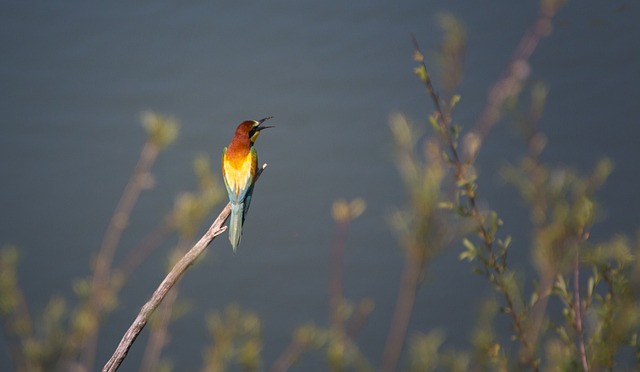The illegal wildlife trade is one of the most urgent conservation challenges of our time, posing a grave threat to biodiversity and jeopardizing the survival of countless species. This lucrative black market, driven by demand for exotic pets, traditional medicine, and luxury goods, has devastating consequences for wildlife populations and ecosystems. Effective strategies for enforcement and awareness are crucial in combatting this illegal activity and ensuring a sustainable future for wildlife. This article delves into the multifaceted approaches necessary to tackle illegal wildlife trade, focusing on law enforcement, community engagement, and global awareness.
Understanding the Scope of Illegal Wildlife Trade
Illegal wildlife trade encompasses the illegal capture, transport, and sale of wild animals and plants. This trade is not limited to iconic species like elephants and tigers; it also includes countless lesser-known species, many of which are critically endangered. The World Wildlife Fund (WWF) estimates that the illegal wildlife trade is worth up to $23 billion annually, making it one of the most profitable forms of transnational crime.
Drivers of Illegal Wildlife Trade
- Demand for Exotic Pets: The allure of owning a rare animal drives collectors to seek out exotic pets, often sourced through illegal means.
- Traditional Medicine: Many cultures still use animal parts in traditional medicine, leading to increased poaching of species like pangolins and rhinos.
- Luxury Goods: Items such as ivory, tortoiseshell, and skins from endangered species are highly sought after for their perceived status and rarity.
- Cultural Practices: In some regions, wildlife products are used in traditional ceremonies, perpetuating the demand for certain species.
Strategies for Enforcement
Strengthening Legal Frameworks
Effective legislation is the backbone of wildlife protection. Countries must enact robust laws that criminalize wildlife trafficking and establish severe penalties for offenders. International agreements, such as the Convention on International Trade in Endangered Species of Wild Fauna and Flora (CITES), play a crucial role in regulating trade and protecting endangered species. Strengthening national legislation in line with CITES can help countries take a firmer stance against illegal trade.
Enhancing Law Enforcement Capacity
Wildlife law enforcement agencies often face challenges such as lack of resources, training, and coordination. To combat these issues, governments and organizations can:
- Train Law Enforcement Officers: Specialized training programs focusing on wildlife crime investigation can equip officers with the necessary skills to detect and investigate illegal activities.
- Increase Funding: Adequate funding for wildlife protection agencies is essential. This includes providing resources for equipment, technology, and personnel dedicated to anti-poaching efforts.
- Collaboration Across Borders: Wildlife trafficking is a global issue that requires international cooperation. Establishing task forces that include multiple countries can enhance intelligence sharing and joint operations to combat trafficking networks.
Utilizing Technology
Technology is becoming an increasingly powerful tool in the fight against illegal wildlife trade. Various technological solutions can aid enforcement efforts:
- Surveillance Drones: Drones equipped with cameras can monitor wildlife reserves and track poaching activities in real-time, allowing for rapid responses to threats.
- Data Analytics: Analyzing data on wildlife trade patterns can help authorities identify hotspots for trafficking and allocate resources more effectively.
- Mobile Apps: Apps designed for reporting wildlife crime can empower citizens to play an active role in conservation. These platforms allow individuals to report suspicious activities anonymously, enhancing community engagement in enforcement efforts.
Strategies for Awareness
Community Engagement and Education
Raising awareness about the consequences of illegal wildlife trade is crucial for changing attitudes and behaviors. Community engagement can take several forms:
- Educational Programs: Implementing educational programs in schools and communities can help foster a culture of conservation. Informing people about the importance of biodiversity and the impact of wildlife trade can lead to more sustainable behaviors.
- Involvement of Local Communities: Engaging local communities in conservation initiatives creates a sense of ownership and responsibility. When communities benefit from sustainable practices, such as eco-tourism or conservation-based livelihoods, they are less likely to engage in illegal trade.
Media Campaigns
Effective media campaigns can raise awareness about the illegal wildlife trade and its impact on species and ecosystems. Utilizing social media platforms, documentaries, and public service announcements can engage a broader audience and galvanize public support for conservation efforts. Campaigns that highlight the emotional and ecological consequences of wildlife trafficking can resonate with individuals and inspire action.
Celebrity Advocacy
Involving celebrities and influential public figures in awareness campaigns can amplify the message and reach wider audiences. Many celebrities use their platforms to advocate for wildlife conservation, drawing attention to the issue of illegal trade. Their involvement can encourage fans to participate in conservation efforts and support related organizations.
Global Collaboration
Combatting illegal wildlife trade requires a coordinated global response. International organizations, governments, and NGOs must work together to share information, resources, and best practices. Initiatives such as the Global Wildlife Program aim to strengthen law enforcement, increase awareness, and support sustainable livelihoods in communities affected by wildlife trade.
Conclusion
The illegal wildlife trade poses a serious threat to biodiversity and the survival of many species. However, with a multifaceted approach that combines effective enforcement strategies with awareness-raising efforts, we can combat this global crisis. Strengthening legal frameworks, enhancing law enforcement capacity, and utilizing technology are critical steps in tackling wildlife trafficking. Simultaneously, engaging communities, leveraging media, and fostering global collaboration will create a more informed public ready to take action against illegal trade.
Protecting endangered species is not just the responsibility of governments and organizations; it requires a collective effort from individuals and communities worldwide. By working together and prioritizing conservation, we can combat illegal wildlife trade and ensure a sustainable future for our planet’s precious wildlife.









